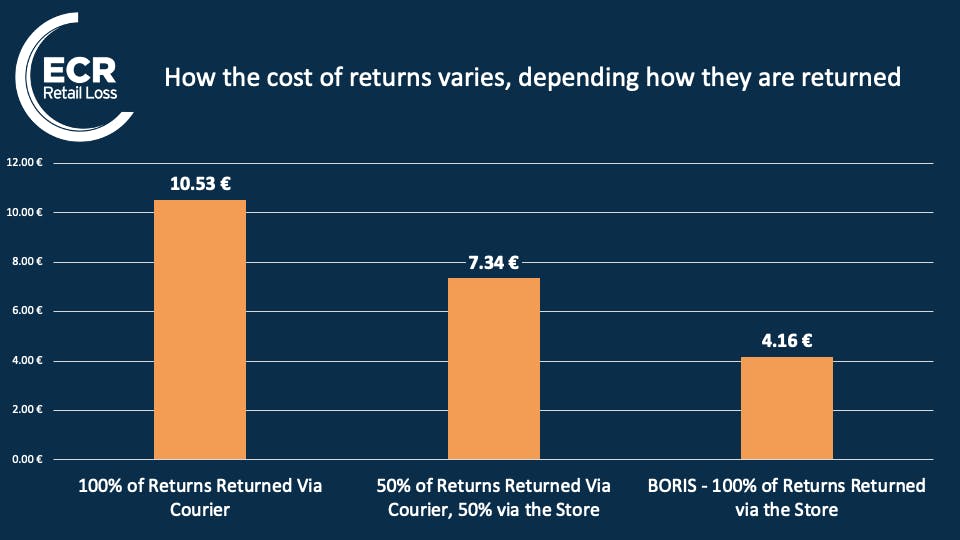
Reducing the cost of returns.
January traditionally sees a mountain of returns for E-commerce business.
In 2022, annual US E-commerce spending hit $1tn. But managing returns is costly. The return rates of certain fashion items are around 70% where the costs of returning an item are often cited to be 4-5 times the cost of the cost to ship the item in the first place.
So, who should pay for returns?
If consumers are charged, how much should they be charged?
Where should these costs – including unexpected losses and fraud - be accounted for within the business?
And how should those costs then influence the retailers’ own returns policy?
In our report The problems & opportunities of E-commerce returns, Professor Lisa Jack, Associate Professor Regina Frei and Dr Sally-Ann Krzyzaniak identified six ways for retailers to manage and reduce the cost of E-commerce returns.
1) Create a strategic plan to deal with returns and treat returns as a profit centre
2) Ensure management have the data and insights they need to make decisions
3) Ensure management across the business can assess the impact of their decisions
4) Simplify and integrate IT systems to provide accurate and real-time information
5) Improve communications with customers and staff, particularly around the accuracy of product descriptions and sizing
6) Think sustainably and consider the circular economy for both financial and reputational reasons. Minimise packaging, travel miles, and disposal of unsellable items
One of the key recommendations from this report is that retailers need to invest in obtaining accurate data from across the business to be able to make accurate decisions about the true costs of returns.
Professor Lisa Jack, using data from previous studies and data shared by retailers in this report, developed a model to help retailers calculate the “true” cost of a return.
The model considered data such as sales & cost price of the item, the rate of returns, the method of return, store vs courier, the percentage that could be resold at full cost and the retailer total handling / admin costs.
Using this ‘true cost of returns’ model, for a typical item selling for €89, the cost of each return is estimated at €10.53, when 20% are returned, all by the courier.
But those costs can vary considerably depending on how consumers are prompted to make their returns. And, if they are charged to send things back.
What does BORIS mean in retail?
BORIS is the acronym which refers to customers who Buy Online and Return in Store.
Many commentators recognise that retailers can reduce costs (and sometimes also increase sales) by encouraging customers to return their online purchases in store.
According to Professor Lisa Jack’s model, for the typical item selling at €89 with a return rate of 20%, if the retailers could persuade 100% of their customers wishing to return an item to them to the store, rather than the courier, then the cost to the retailer of each return is reduced to €4.16, from €10.53.
The reduction in costs when customers can make returns in store is significant. A BORIS approach to returns can save retailers significant sums of money.
The ECR Working Group on ecommerce loss and returns.
Throughout 2024, ECR Retail Loss will continue to produce research papers and host meetings for experts to share new insights best practices across E-commerce and returns. We will be joined by global retailers including Adidas, Halfords, Wayfair and the Hut Group as we dig deeper into this whole area.
Join our mailing list here to be first to know when we produce reports or host meetings on this and other topics.
The next three meetings of our E-commerce Loss group are:
Reducing goodwill credit by 20%, with Conrad Fragstein, Director of Cybercrime for Adidas on 1 February
Returns Fraud research launch meeting, with Professor Michael Townsley of Griffith University, Australia, on 13 February
Building Digital Loss Prevention Capability, with Mariam Baig, Senior Manager, Scam Prevention for Wayfair, on 13 March
If you would like a copy of the model, contact Colin Peacock @ colin@ecrloss.com
Jan 5, 2024
Main office
ECR Community a.s.b.l
Upcoming Meetings
Join Our Mailing List
Subscribe© 2023 ECR Retails Loss. All Rights Reserved|Privacy Policy
